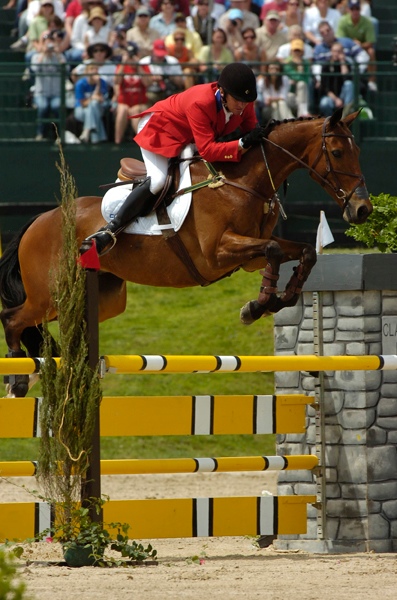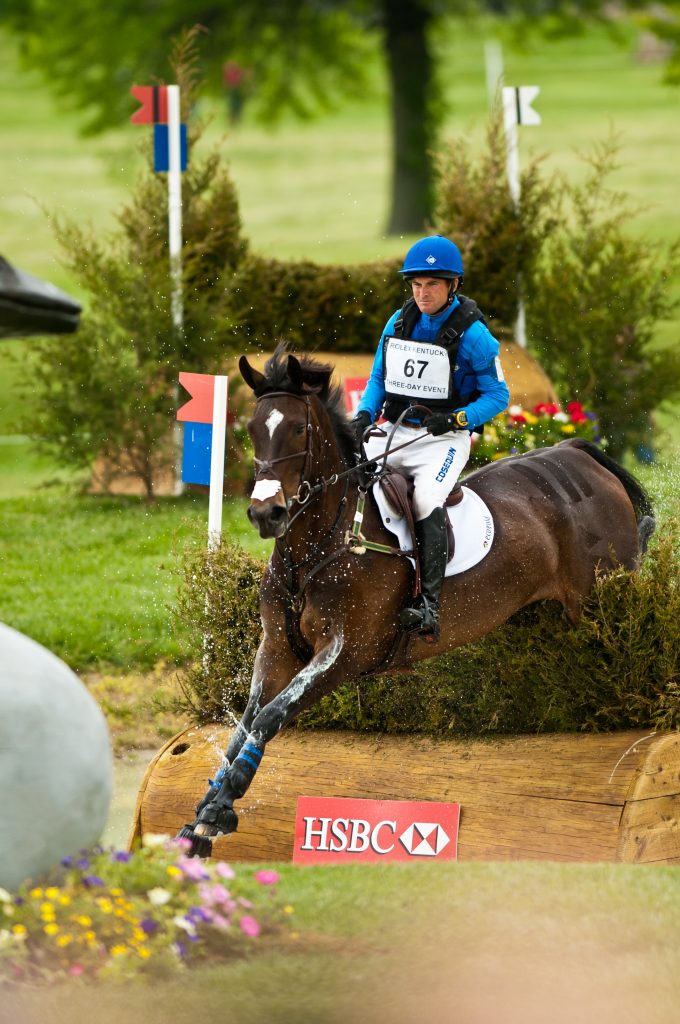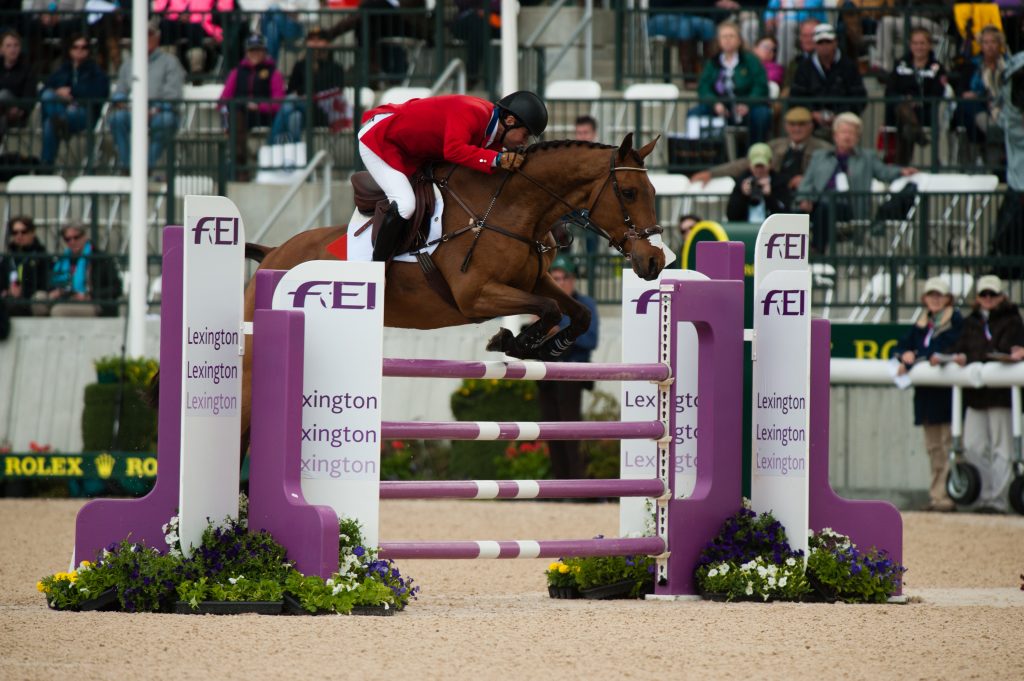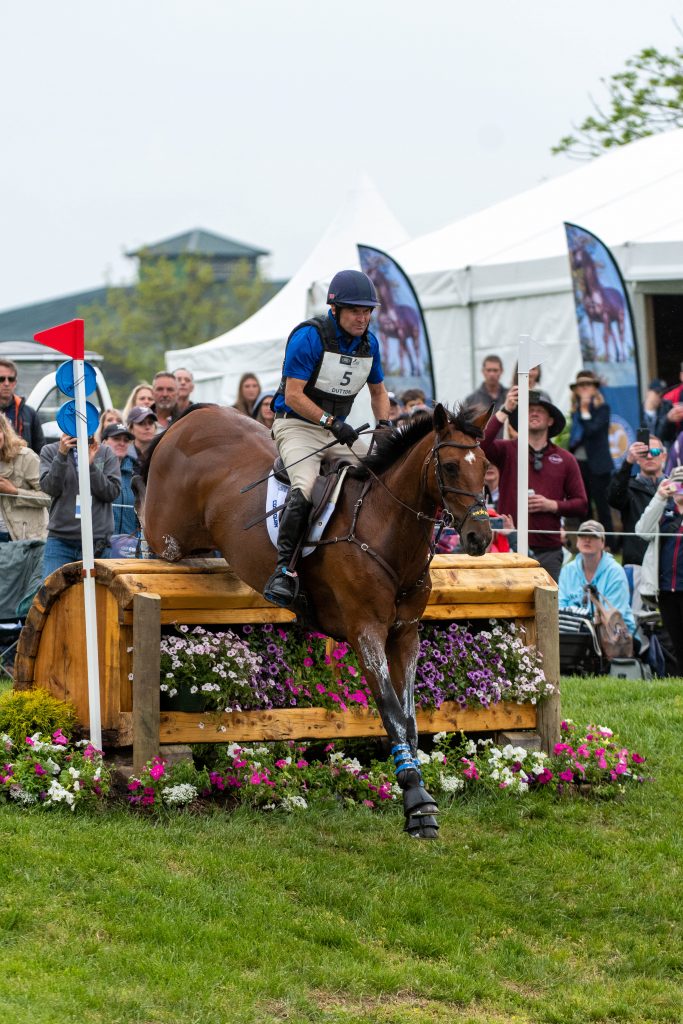Phillip Dutton is no stranger to the sport of eventing. Over the course of his career, he has represented Australia and the United States in a combined seven Olympic Games and has earned two gold medals and one bronze.

© Amy K. Dragoo
In addition to his Olympic achievements, Dutton has won team gold at two Pan American Games and one individual silver medal. He’s also been to seven World Championships and has racked up accolades including 13 USEA Leading Rider of the Year awards, Developing Rider Coach of the Year in 2009, and countless wins and top placings at three-star, four-star and five-star events.
You’d be hard-pressed to find a more qualified athlete to speak on the evolution of eventing. Dutton has experienced first-hand how the sport has changed over the past five decades. From cavalry-designed horse trials to the addition of frangible pins on cross country, he is well-versed in it all. Here, he discusses the evolution of eventing throughout his career and his thoughts on the future of the sport.
What have you seen in the evolution of the sport since your first Olympics in Atlanta in 1996?
Eventing has come a long way, keeping in mind that the sport was originally designed as training for military officers and cavalry officers. It’s come a long way since then. In Atlanta, it was more of just a cross-country endurance test. We blasted away on cross country, and then it sort of didn’t matter so much what happened with the dressage or the show jumping.
In those days, the cross country was so much longer. I think it was like a 13-minute cross-country course. Then we had Phase A and then the steeplechase (Phase B) and then Phase C and then the cross country. It was a big day for the horses.
The next Olympics in Sydney, Australia, was where things started to change. A lot of the countries, the riders, the coaches and the teams started to realize that, certainly the dressage, we needed to be able to get that more. If you could get really competitive there and leave the jumps up in show jumping, and then if you went fast in the cross country, there’s nobody that could beat you.
Then, through the FEI, the sport started to abbreviate the cross country. They took out Phases A, B and C so it wasn’t as much of an endurance test.
It has evolved and there’s certainly more emphasis on the dressage and show jumping now and the accuracy of the horses. They need to be more rideable cross country than they did before. The big, strong, pull-your-arms-out kind of horse doesn’t really have a place at the highest level now.

© Amy K. Dragoo
It’s been a great evolution. After the Sydney Olympics, then it went on to Athens, Greece. It took a little bit of a dip there, I feel, as in the cross country and the standard and the difficulty of it. The powers that be made the cross country a little stronger still after that.
I think that the endurance and the fatigue on the horses is not as great. But certainly, now, the difficulty of the cross country is still up there. We’re fortunate to still keep great course designers that can, in an intelligent way, make it so it’s still a proper test without making it too difficult or making it unfair for the horses.
Going forward, do you think there will be more change in the sport?
What we saw in Tokyo in 2021 was by far the biggest show jumping that we’ve encountered in eventing. So, there’s more emphasis going into that.
I’ve touched on these frangible breakaway pins, which are playing a part. It’s not just about, what you might call “the good old days.” Then, you could just run your horse at the fences, and they didn’t come down. But nowadays, a lot of them have frangible pins. With a certain amount of weight, they will break or let go, and then you receive a penalty. That part of it is going to be influential.
The flag situation is still an ongoing issue. It’s very hard for a jump judge to be able to decipher what part of the horse was inside the flag if they hit it. There are other sports with like ski racing that have the flag situation. So, there probably is a better way out there—a fairer way, an easier way—to understand it as far as flags go, which I can see happening in the future.
How do you feel about the way eventing has evolved?
I’ve embraced the changes. It’s good for our riding, it’s good for horsemanship. It’s one thing to have a horse that just takes on anything, but there’s a lot more tact and a lot more sophistication that goes into it now.
The cross country is not, in my opinion, any easier—it’s just less emphasis on the endurance part of it. There’s more emphasis now on a good, clever jumping horse and a really adjustable horse. All of that is good.
There was a time when off-the-track Thoroughbreds filled the whole sport. That’s not the case as much anymore. A good Thoroughbred is still a good horse, but it has opened up for purpose-bred horses. These still have a big percentage of Thoroughbred in them so they can still gallop and they can still go quick. But, breeders have bred them for their movement and their jump as well. A whole industry has opened for a lot of people that have come into it.
Like any change, a lot of people don’t like it or are against it. I think the sport’s better for it and it’s better for the horses.

© Amy K. Dragoo
Also, there’s a lot that has happened in my career or from the time I’ve come to the United States. There was one Advanced horse trial in this country when I first came, which was in the early nineties. Now, the horse trials are really flourishing in this country. The long formats like you see at the Maryland Five Star and the Kentucky Three-Day Event are still popular, but the shorter format courses and classes are popular and it brings the local community out, too.
Eventing has become a proper sport and an industry. A lot of riders are now are making a living from this. In my day, you had to ride at the racetrack or do something on the side. Eventing was something that you saved money up to do. Whereas now, there’s so many people coming into the sport—lessons, selling horses, et cetera—that it’s a whole industry in itself.
Has the evolution of the eventing changed what qualities you look for in a horse?

© Amy K. Dragoo
Absolutely. And it keeps changing and evolving. The difficult part about selecting the horse is—in show jumping, you can go and try a horse at a grand prix height and know what they’re feeling like. The horses in eventing, you’re not going to go and gallop them over a five-star cross country course and then be able to see what they show jump like the next day. It’s always a bit of an unknown how they’re going to come out of that experience. So many things go into how they handle it.
Horses that have that Thoroughbred blood in them can usually handle the cross country better. A horse that really struggles on the cross country, even if you make the time, they’re totally exhausted and they’re not going to recover the next day as well. It doesn’t matter how good of a jumper they are when they’re feeling normal. When they’re really exhausted, they’re not going to come out and jump very well.
So, there’s a little bit more to it than just finding a good, clever jumper. They’ve got to be able to have the scope and the endurance and the ability to handle cross country relatively easily. The horse that is working really, really hard—chances are he is not going to jump as well the next day.










